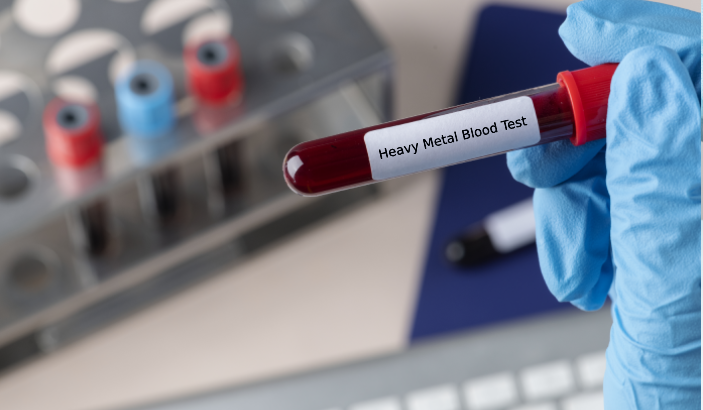Heavy metals, though trace amounts are essential for health, can be toxic at high concentrations. Exposure to heavy metals such as lead, mercury, arsenic, and cadmium is a significant health concern due to their potential to cause various severe health issues. The heavy metal blood test is a critical tool used to detect and measure the levels of heavy metals in the blood to evaluate and manage potential toxicity.
Purpose of Heavy Metal Blood Tests
- Detection of Toxic Exposure: The primary purpose of this test is to detect and measure exposure to toxic heavy metals. These tests are crucial for individuals who might have been exposed to heavy metals through their environment, occupation, or lifestyle.
- Diagnosis of Poisoning: Blood tests for heavy metals are used to diagnose poisoning from metals, which can cause symptoms ranging from acute to chronic health issues.
- Monitoring and Treatment Evaluation: For those known to have been exposed or are at high risk, these tests help monitor metal concentrations and the effectiveness of treatment interventions.
Preparation for the Test
- Fasting: Depending on the specific metals being tested for, you may need to fast for a period (usually 8-12 hours) before the test.
- Avoid Exposure: It’s important to avoid exposure to any heavy metals for a few days before the test, if possible. This includes dietary sources or occupational exposure.
- Disclosure of Medications and Supplements: Inform your healthcare provider about all medications and supplements you are taking, as some substances might interfere with test results.
Procedure of the Heavy Metal Blood Test
- Blood Sample Collection: A small sample of blood is drawn from a vein, typically in the arm. The procedure is performed by a healthcare professional in a clinical setting.
- Handling and Processing: The sample is then properly labeled and promptly sent to a laboratory for analysis.
- Analytical Techniques: The laboratory uses techniques such as atomic absorption spectroscopy, mass spectrometry, or other specialized methods to accurately measure the levels of specific metals.
Normal Range
- Varies by Metal: Normal ranges can vary significantly depending on the specific heavy metal. For example:
- Lead: Levels below 5 micrograms per deciliter (µg/dL) are considered safe in adults.
- Mercury: Levels should be less than 10 µg/L in blood.
- Arsenic: Normal levels are typically less than 3 µg/L, but this can depend on dietary intake.
- Cadmium: Normal blood levels are usually less than 5 µg/L.
Results Interpretation
- Normal Results: Indicate that there is no significant exposure to the tested heavy metals.
- Elevated Levels: Suggest exposure or accumulation of heavy metals in the body. Depending on the levels, it may indicate acute or chronic poisoning.
- Follow-Up: Abnormal results usually require further testing, including more detailed blood tests, urine tests, and assessments of potential exposure sources.
Heavy metal blood tests help in the diagnosis and management of metal exposure and toxicity. Individuals who believe they may have been exposed to heavy metals, or who live in high-risk areas, should consider regular testing as part of their health monitoring strategy. Understanding both the implications of the test results and the necessary steps to avoid or limit exposure to heavy metals can significantly impact an individual’s health outcomes.
I specialize in writing about health, medical conditions, and healthcare, drawing extensively from scientific research. Over the course of my career, I have published widely on topics related to health, medicine, and education. My work has appeared in leading blogs and editorial columns.









